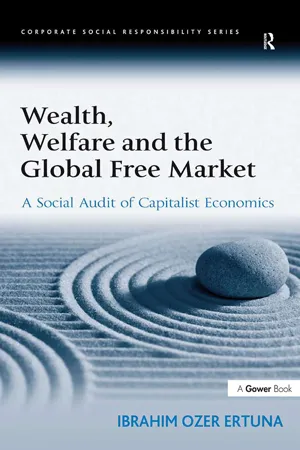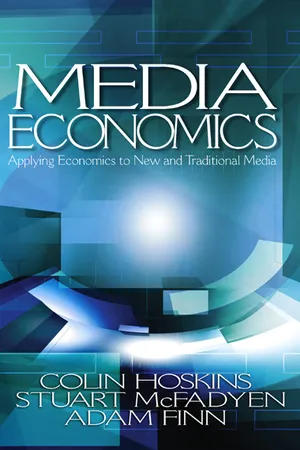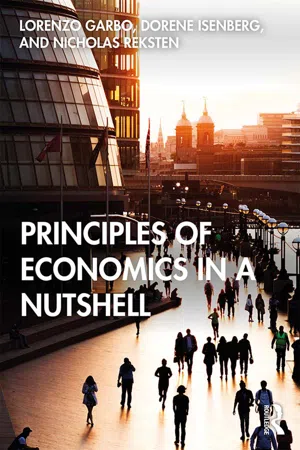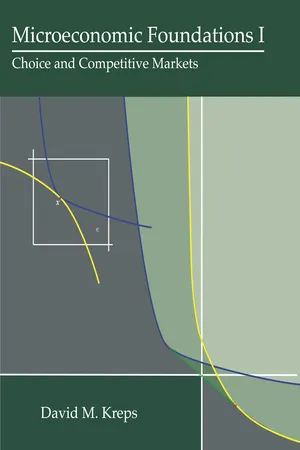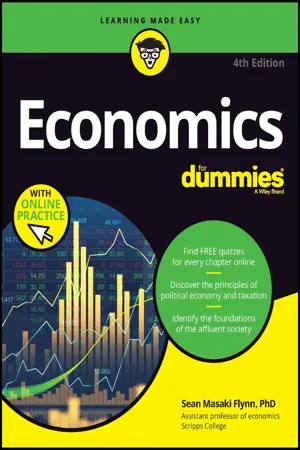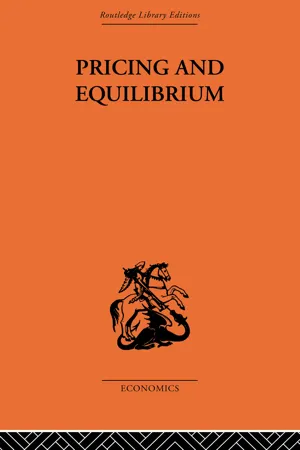Economics
Cost Revenue and Profit Maximization
Cost, revenue, and profit maximization refers to the process by which a firm determines the level of output that will result in the highest possible profit. This involves analyzing the costs of production, the revenue generated from selling goods or services, and finding the output level that maximizes the difference between total revenue and total cost. It is a fundamental concept in business decision-making.
Written by Perlego with AI-assistance
Related key terms
Related key terms
1 of 4
Related key terms
1 of 3
11 Key excerpts on "Cost Revenue and Profit Maximization"
- eBook - ePub
- Rob Dransfield(Author)
- 2013(Publication Date)
- Routledge(Publisher)
Figure 4.9 shows this.Figure 4.9 The profit maximising outputPlease note that total revenue is represented by a straight line assuming that the business charges a standard price as it increases output. Total cost increases more than proportionally to the increase in output at first (because of diminishing returns). Total cost then rises less than proportionally to the increase in output because of increasing returns. Beyond the most efficient point total cost will again start to rise more than proportionately to output because of diminishing returns.The profit maximizing output is the point at which there is the greatest vertical difference between cost and revenue.Reflective questionMarginal cost and marginal revenue Economists use marginal cost and marginal revenue analysis as a tool to identify the profit maximizing point of a firm. The logic behind this is simple. The margin is the extra unit of something – for example, the additional cost or the additional revenue from producing one more unit. When the marginal cost of producing an extra good is less than the marginal revenue of the good, the producer or seller will make additional revenue from selling that unit. For example, a producer knows that the 1,000th unit of production will cost 50 pence to produce but will yield 60 pence worth of revenue. So it makes sense to make that unit. The producer knows that the 1,100th unit will cost 59 pence to produce but will yield 60 pence worth of revenue. So it makes sense to make that unit.- Will producers always want to maximize profit? If the answer is no, what are the alternatives and why might they choose one of these alternatives?
- eBook - ePub
- John H Hoag(Author)
- 2012(Publication Date)
- WSPC(Publisher)
So far we have looked at the firm’s costs, but costs are only half of the information that firms need to make decisions. Firms also need to know revenue. The revenue and cost together determine profit which, in our model, is the focus of the firm’s attention. We will assume that firms act to maximize profit. Is this an accurate description of how firms behave?At one level, it is clearly not a very descriptive assumption. We know firms that do things that raise their cost without discernable impacts on their revenue. You must have seen firms supporting charities and other worthwhile projects. These clearly cost something without discernable revenues attached. One could argue that these activities enhance the firm’s reputation, but reputation is not revenue. So why do economists stick with this assumption? While not a perfect reflection of reality, the assumption does seem to reflect quite a bit about how businesses make decisions. We have seen news stories of firms that break laws in the pursuit of profit. Tales of Wall Street greed abound. These are, to a large extent, behaviors that start with profit maximization. For the economist, the assumption of profit maximization is the simplest assumption we can make that captures a sizable part of the behavior of firms. While not perfect, it is also not a bad assumption.To make progress toward understanding how this assumption yields results, we need to move forward with our discussion of the general revenue concepts. We will then develop the revenue concepts for competitive firms, which we will then combine with the cost concepts of the previous chapter to obtain profit. Once we have profit, we can move to profit maximization, the shutdown condition, and the firm’s supply curve. Here we go!5.2 Revenue ConceptsIn this section, we will develop the revenue concepts that will be used for all firms. When we are done with the general concepts, we will turn to the particular case of the competitive firm and see what the revenue curves look like in this case. We begin with definitions. - eBook - ePub
Wealth, Welfare and the Global Free Market
A Social Audit of Capitalist Economics
- Ibrahim Ozer Ertuna(Author)
- 2016(Publication Date)
- Gower(Publisher)
costs of the products sold consist of both the costs of input materials and the factor costs. That is, the costs considered are costs of materials, labor, capital, and all relevant costs pertaining to the production and sale of the products. Again, under the assumptions of economics, the costs of additional production and sale follows first a decreasing, then an increasing trend. The additional cost is called “marginal cost” in economics. Since profit is the difference between revenues and costs, as it is commonly known, profit is maximized when the marginal revenue is equal to the marginal cost. This profit-maximization rule of economics is the best-known rule of economics. But, profit defined in this way is not something approved of in economics. Because, this profit earned is in excess of the earnings from the factor inputs. It is a return without an input; therefore it is not justified. As we have said before, some people justify this profit by considering it to be the return for entrepreneurial skill.According to capitalist theory, profits arise only in monopolistic markets; or if the companies have monopolistic powers to manipulate the markets. The monopolistic markets in the theory are the markets where there is only one seller who sells a product, which has no substitute, with barriers to entry. Since the theory does not approve of profits defined in the above way, in capitalistic economies, there are rules and regulations to eliminate monopolies and to prevent the development of monopolistic power and to constrain monopolistic behaviors.According to the capitalist free market economy, profits do not arise in purely competitive markets. In markets that are fully competitive, only a homogeneous product is traded among a great number of buyers and sellers, none of whom is able to influence the market. It is also assumed that in these markets there is no barrier to entry, transportation costs do not exist and there is full information on anything relevant to the markets. Under these assumptions, the competition among sellers will eliminate profits, costs will be minimum, and the price, marginal revenue, average cost and marginal cost will all be the same. In perfectly competitive markets, there would be no profit or income that is not deserved. - Sandip K. Lahiri(Author)
- 2020(Publication Date)
- Wiley(Publisher)
2013 ).To build a solid foundation for a profit maximization framework two key concepts need to be understood first, namely cost intensity and key cost indicators. The concept of cost intensity sets the basis for measuring economic performance of the process, while the concept of key cost indicators provides guidance for what to do and how. Both cost intensity and key indicators are the cornerstones of an effective and sustainable profit management system.4.2 How is Operating Profit Defined in CPI?
A company operates to make profit. The best way to summarize a profit maximization project's objective is “Maximize profit in USD/h and sustain it.” Usually profit is defined as:(4.1)4.3 Different Ways to Maximize Operating Profit
To maximize the profit function given in Equation (4.1) , some of the options are given below (refer to Figure 4.1 ):- Maximize each product rate or maximize the total production rate: This is done by running the plant at the highest possible capacity or debottleneck the plant to enable it to produce more.
- Maximize the unit sales value: The unit sales value is usually determined by the domestic or international market supply–demand scenario and is usually beyond the control of the company's local management. However, making a premium quality product and establishing a brand image or reputation in the market can lead to a higher sales value. Good customer focus and genuine after‐sales service can influence this.
Figure 4.1
- Daniel Marburger(Author)
- 2015(Publication Date)
- Business Expert Press(Publisher)
This book is dedicated to using economic theory to illustrate the role that each of the five forces plays in a firm’s profitability. Each chapter will focus on one of the five forces and use economic theory to demonstrate its impact on a firm’s profits.Summary• The law of demand forces firms to lower prices to sell additional output. The marginal revenue is the additional revenue generated by the additional output. It is the sum of the output and price effects. The output effect is the revenue generated by the additional unit of output. The price effect is the foregone revenue from lowering the price on the units that would have been produced anyway.• A firm’s costs are composed of fixed costs and variable costs. Fixed costs do not vary with production whereas variable costs vary with production. The marginal cost is the additional cost incurred by an increase in production.• The marginal cost of production is expected to decrease initially, but eventually it should increase due to the law of diminishing marginal returns.• A firm will maximize profits by producing every unit for which the marginal revenue exceeds the marginal cost.• The opportunity cost of operating a business is the sum of its explicit and implicit costs. The explicit costs include the expenses incurred in operating a business. Implicit costs consist of income opportunities that are foregone by operating the business.• The difference between a firm’s revenue and its explicit costs represents its accounting profit. This is the figure represented in an income statement. The difference between a firm’s accounting profit and its implicit costs is called the economic profit. It compares the firm’s present accounting profit with foregone income opportunities.•- eBook - ePub
Media Economics
Applying Economics to New and Traditional Media
- Colin Hoskins, Stuart M. McFadyen, Adam Finn(Authors)
- 2004(Publication Date)
- SAGE Publications, Inc(Publisher)
Theory of the Firm . Firms are assumed to maximize profits. Profits are equal to total revenue minus total cost. Thus a firm chooses to produce at the output level or price that maximizes the difference between total revenue and total cost. In the last chapter, we examined how cost varied with output. The first topic we examine in this chapter is how revenue varies with output and price. By bringing together the revenue with the cost side examined in the last chapter, we are able to explore the level of output and price that maximizes profits and the use of marginal analysis in determining these. Incremental analysis and discounting are introduced as managerial techniques firms can use to identify the most profitable option in real-world situations. We examine in detail how the economist measures profit, how this differs from the accountant’s concept of profit, and the implications for decision making by firms. Two managerial decision techniques, incremental analysis and net present value, are explored. The implications of risk for business decisions are considered.6.1 RevenueWe need to distinguish between total revenue, average revenue, and marginal revenue, and examine the relationship between these revenue concepts. We will do this assuming that each unit of output sold is sold at the same price.Total revenue (TR) is equal to the quantity (Q) sold of a good or service multiplied by the price (P) at which it is sold:TR = Q × PAverage revenue (AR) is the revenue per unit of output. It equals total revenue divided by quantity:AR = TR/QBut as TR = Q × P, substituting for TR in this equation gives AR = Q × P/Q = P. Hence AR is equal to price. This relationship implies that a firm’s demand curve is also its average revenue curve. The demand curve shows the quantity demanded at any given price. The average revenue curve shows the average revenue, equal to price, for any quantity demanded. Hence a firm’s demand curve often has an AR label attached to it as well as a D.Marginal revenue (MR) is the change in total revenue resulting from the output of one more unit of the good or service:MR = ΔTR/ΔQ where ΔTR is the change in total revenue and ΔQ is the (one unit) change in output.If the firm can sell the additional unit at an unchanged price, then the demand curve for the firm is horizontal, and marginal revenue equals price. As we will see later, however, this only holds for perfect competition, a very competitive situation in which many companies sell an identical product. - eBook - ePub
- Lorenzo Garbo, Dorene Isenberg, Nicholas Reksten(Authors)
- 2020(Publication Date)
- Routledge(Publisher)
every input gets fully paid at the current rates or wages. You may wonder: why bother to own this firm if the firm is just breaking even? Well, if the owner of the firm owns all or part of the capital stock (machinery, space, and so on), then the owner will receive a normal return from the investment in that capital stock. And if the owner actually works in the firm, the owner will also receive the appropriate compensation for her/his labor. The firm just “makes enough” to cover all the costs without losing and without gaining anything extra (no economic losses, no economic profits).Take a moment to reflect on these different concepts of profits. What does it mean to a firm’s operation if it is not making a normal profit? Now, how would you describe the other profit situations?
In order to analyze the decision-making process that leads to the firm’s maximization of profits, we need to become very well acquainted with the determinants of Total Revenues and Total Costs.4.4A survey of market structuresLet’s begin our analysis with total revenues. We have already encountered this concept when we talked about the price elasticity of demand in Chapter 3 : total revenues consist of the “money” the firm obtains by selling its output, i.e., TR = P * Q, where “P” is the price of each unit of output, and “Q” is the firm’s output. Thus, if the firm is a hair salon that produced 200 haircuts (Q = 200) sold at $30 each (P = $30), the total revenues of the hair salon turns out to be $6,000.A key question we need to look at is: if the firm changes the quantity produced, does the firm affect/change the price at which that quantity produced can be sold? Another way to ask this question is: does the price at which the firm can sell its product depend on how many units of the product the firm brings to the market? What is your intuition about this? If Apple doubles the number of iPhones supplied in the market, do you think that the price of iPhones will be affected? If a peasant with a small number of cows doubles the amount of milk supplied in the overall market of milk, do you think that the price of milk would be affected?You may have already come to the realization that the answer to these questions depends on how large the firm is in relationship to the market - eBook - ePub
Microeconomic Foundations I
Choice and Competitive Markets
- David M. Kreps(Author)
- 2012(Publication Date)
- Princeton University Press(Publisher)
It is impossible to do justice to this literature here, without expanding this chapter unreasonably and, in any case, some of the answers require pieces of economics that we haven’t yet studied. So I’ll plead simply that profit maximization is a modeling assumption, one with which economists are comfortable not as a law of nature but as an approximation to reality. Having said that, three specific points are worth making, albeit briefly. • Profit maximization as an objective function for firms is a lot more specific than utility maximization for consumers. When we assume that a consumer maximizes her utility, we leave it up to the consumer how she feels about apples versus oranges. But, once prices are given, the trade-offs facing a firm are fixed if the firm maximizes profit. (On the other hand, the choice set of a consumer is fixed once prices are fixed and the consumer’s income is given. For firms, the production-possibility set Z gives a lot of latitude to the modeler.) • Accounting earnings or income is not economic profit. Accounting income does not include any return on capital equipment. • The arguments in the literature for profit maximization when there is a division between managers and owners of the firm turn to some extent on a contention that managers act on behalf of the firm’s owners, who prefer profit maximization. Why managers do this is usually the issue being studied in the literature. But it is worth noting that the assertion that owners prefer profit maximization is very bound up in the assumption that the firm has no impact on prices - eBook - ePub
Economics For Dummies
Book + Chapter Quizzes Online
- Sean Masaki Flynn(Author)
- 2023(Publication Date)
- For Dummies(Publisher)
x -axis, total revenue and total costs are represented as rectangles:- Total revenue: For the monopolist maximizing profits by producing qmunits and selling them forpmdollars, total revenue is price times quantity: . Consequently, total revenue is the area of the rectangle whose length is equal to the price and whose width is equal to the quantity. That is, TR is the area of the rectangle that has cornersO, pm , C,andqm .
- Total costs: Total costs are also a product — a product of the average cost per unit times the number of units. If you go up from Point qmuntil you hit the ATC curve, you get to Point B. The vertical distance up to Point B gives the average cost per unit of producing outputqm .So if you multiply that amount by the outputqm ,you get total costs. Geometrically, that means total costs are given by the rectangle whose corners are O, A, B, andqm .
In Figure 8-2 , the total revenue rectangle (O, pm , C, qm) is bigger than the total cost rectangle (O, A, B, qm), meaning that the monopoly is earning a profit. That profit is given by the shaded rectangle whose points areA, pm , C,and B, which represents the difference in areas between the total revenue and total cost rectangles.Understanding that monopoly doesn’t guarantee profitability
Just because a firm has a monopoly doesn’t mean that it’s guaranteed a profit. If demand is weak relative to costs, then the monopoly price will be too low to generate a profit. - eBook - ePub
- Erich Schneider(Author)
- 2013(Publication Date)
- Routledge(Publisher)
Figure 72 gives the two revenue curves (i.e. the revenue as a function of the sales).Let us assume to start with that the seller has no costs, so that it is clear that it will be most profitable to offer that quantity of the two jointly produced goods at which the revenue is at a maximum and at which, therefore, the marginal revenue is nil. The seller will therefore plan a sales of and (Fig. 72 ). As the two products are being produced in a fixed unalterable proportion, it by no means follows that a production equal to of A also corresponds to a production of of B .We must here distinguish between the following cases: (α) The proportion between the two most profitable levels of sales corresponds to the quantitative proportion in which the goods are produced: In this case the quantities produced correspond precisely with the planned levels of sales. (β) The proportion corresponding to what is the most profitable level of sales is not that in which the two goods are produced: i.e. either orIf then the quantity , which yields the maximum revenue from good A 9 corresponds to a quantity of good B larger than . If the seller sells the quantity which is produced by this process, then he will not maximize the revenue he receives for B . If the maximum revenue is to be obtained, then the seller has to destroy the quantity of good B which he produces in excess of (i.e. the difference x 1 — ).(1)If on the other hand then a larger quantity of A will be produced than and the excess quantity must be destroyed.We can formulate these results as follows : the seller will plan that output of each good for which the marginal revenue is nil. If the technical conditions of production are such that the production of a good for which the marginal revenue is nil corresponds to the production of a quantity of a joint good for which the marginal revenue is negative, then part of the jointly produced good must be destroyed.Similar considerations arise if we take into account costs of production and of selling. We have shown already, (a) that it is profitable for the seller of a good, in the case of a single-product firm, to increase the sales by one unit so long as marginal revenue is larger than marginal cost; (b) that the most favourable level of sales must satisfy the condition that marginal revenue equals marginal cost. The same propositions hold also in the case of joint production in constant proportions. It pays the seller to increase the sales by one complex unit if the marginal revenue of the complex unit is larger than the marginal cost; and it is profitable to increase the sales up to the point where the marginal revenue of a complex unit is equal to the marginal cost. We have here to notice also that, because of the fixed proportions in which the two goods are produced, an increase in the sales by 1 unit may lead to a negative marginal revenue from good A , while the marginal revenue from good B is still positive. If that is the case, then it is profitable for the seller to destroy as much of the good A - eBook - ePub
- (Author)
- 2023(Publication Date)
- Wiley(Publisher)
Firms under conditions of perfect competition have no pricing power and, therefore, face a perfectly horizontal demand curve at the market price. For firms under conditions of perfect competition, price is identical to marginal revenue (MR).Firms under conditions of imperfect competition face a negatively sloped demand curve and have pricing power. For firms under conditions of imperfect competition, MR is less than price.- Economic profit equals total revenue (TR) minus total economic cost, whereas accounting profit equals TR minus total accounting cost.
- Economic cost considers the total opportunity cost of all factors of production.
- Opportunity cost is the next best alternative use of a resource forgone in making a decision.
- Maximum economic profit requires that (1) MR equals marginal cost (MC) and (2) MC not be falling with output.
- The breakeven point occurs when TR equals total cost (TC), otherwise stated as the output quantity at which average total cost (ATC) equals price.
- Shutdown occurs when a firm is better off not operating than continuing to operate.
If all fixed costs are sunk costs, then shutdown occurs when the market price falls below the minimum average variable cost. After shutdown, the firm incurs only fixed costs and loses less money than it would operating at a price that does not cover variable costs.
Index pages curate the most relevant extracts from our library of academic textbooks. They’ve been created using an in-house natural language model (NLM), each adding context and meaning to key research topics.
Explore more topic indexes
Explore more topic indexes
1 of 6
Explore more topic indexes
1 of 4


